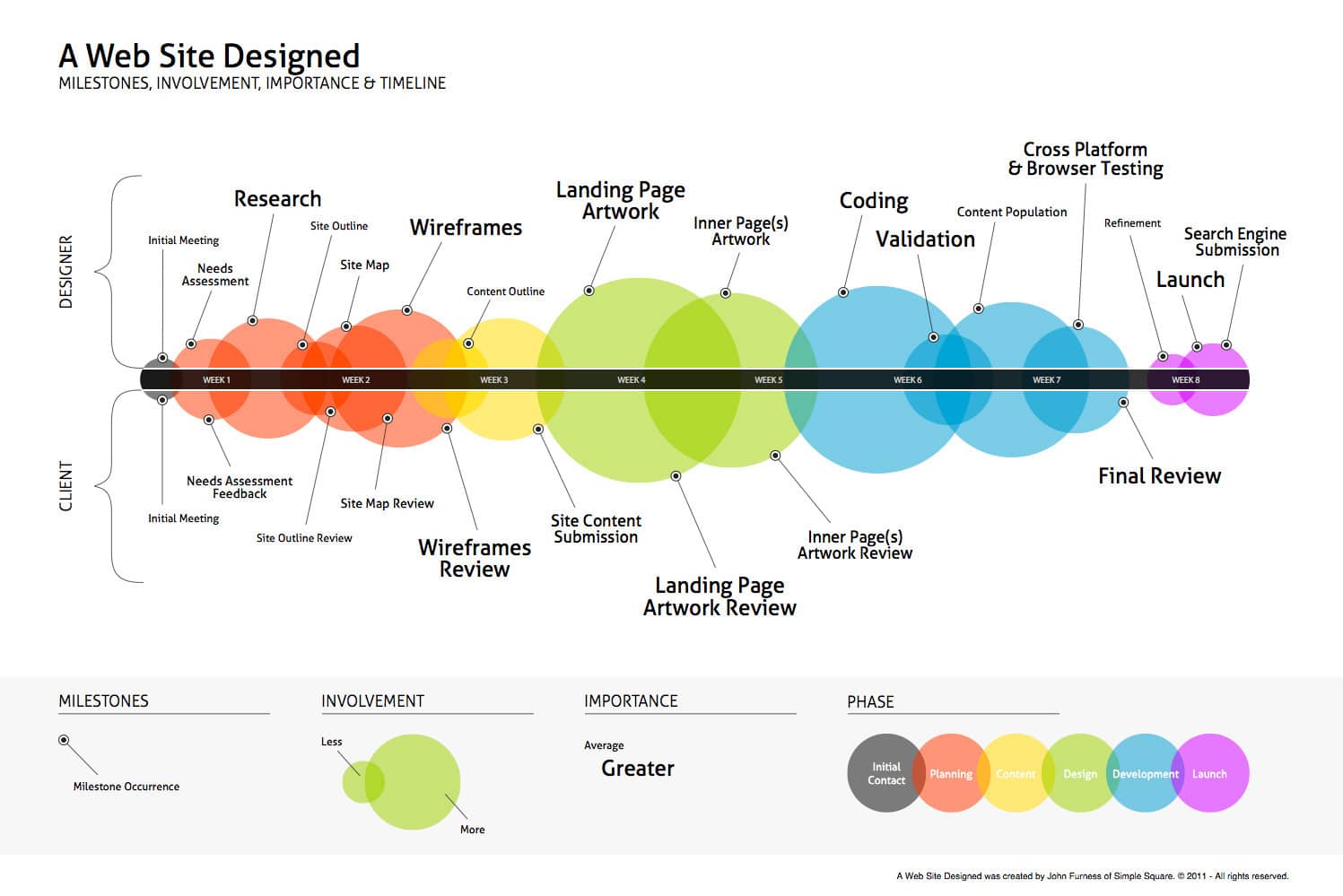Spoiler alert: There is no “ultimate cheat sheet” or silver bullet that will guarantee a flawless web development workflow. Web development is far too complex for that perfect solution to exist, and anyone who tells you otherwise is selling something.
So, was that title just worthless link bait?
I don’t think so. You decide:
Why the web development workflow must be customized
Below is an image that came up near the top of the Custom Software by Preston for a standard web development workflow:
It’s right in line with about a thousand other template-style flowcharts or numbered lists you can find all over online, and in-and-of-itself, it’s not bad. It accomplishes the basic purpose of showing the generic flow of activity from initial discovery to completed deployment of the application, and it effectively illustrates how much collaboration is required between developers and clients to keep the project moving efficiently.
What it doesn’t address, however, is the highly idiosyncratic process that each developer or development team uses to attack each of these basic steps. It doesn’t account for the individual needs of each unique development project as well as each client’s business needs and goals.
For instance, an ecommerce web development project involving a non-profit selling promotional goods to raise funds is going to be far different from a backend web application project designed for business process optimization.
While both these projects will likely require some attention to be given to each of the phases described in the picture, they’re certainly not going to follow the exact same workflow in reality.
The developer’s needs
Web development companies are often made up of a team of professionals in several different disciplines – sales, business analysis, design, development, quality review, testing, and perhaps more. Increasingly, these days, development teams are geographically separated and need to negotiate time zone differences, language barriers, cultural adjustments, and a host of other items that could potentially affect their internal processes.
From scheduling to quoting on the project, and all of the details required to complete the project, these factors will affect the development team’s performance.
As a client, none of this should be your problem, per se, and you certainly shouldn’t run into issues with the development company carrying out their end of the deal because of them.
But it’s important to understand going in that this talented team of professionals who will be designing and programming your web project will have their own optimal processes and requirements in place. While there should be some room for flexibility, you’re bound to receive a better overall product if you can work with their needs to a reasonable extent.
The client’s needs and goals
Even more than the web development company’s, the client’s unique needs and business goals will drive the development project. It’s vital that everyone involved in the project fully appreciate the client’s goals and any requirements that will affect the project – such as time frames, budget, legal and regulatory obligations, etc. – are completely understood by every member of both teams.
We’ve found through experience that having a written and signed description of the project scope and workflow that includes all of this information is the most effective way to ensure we can start a project on the right foot and move through the project’s workflow with as little unnecessary delays as possible.
The real “ultimate cheat sheet” for web development workflow optimization:
So, all that being said, if I had to sum this lesson up in one simple, pithy, phrase you could print out and tape to your monitor to help you approach every single web development workflow with optimal clarity, here it is:
It depends.
Go ahead and print that out if it will help you.
Either way, understand that an optimal web development workflow springs from a deep and thorough understanding of the project’s unique requirements and idiosyncrasies. It’s not a template to be filled in, but rather a framework to be built on fresh with every new project.
If you’ve recently spoken to a web development company that has indicated your project fits beautifully into their Web Development Workflow Template…. run away. Then, contact us.





